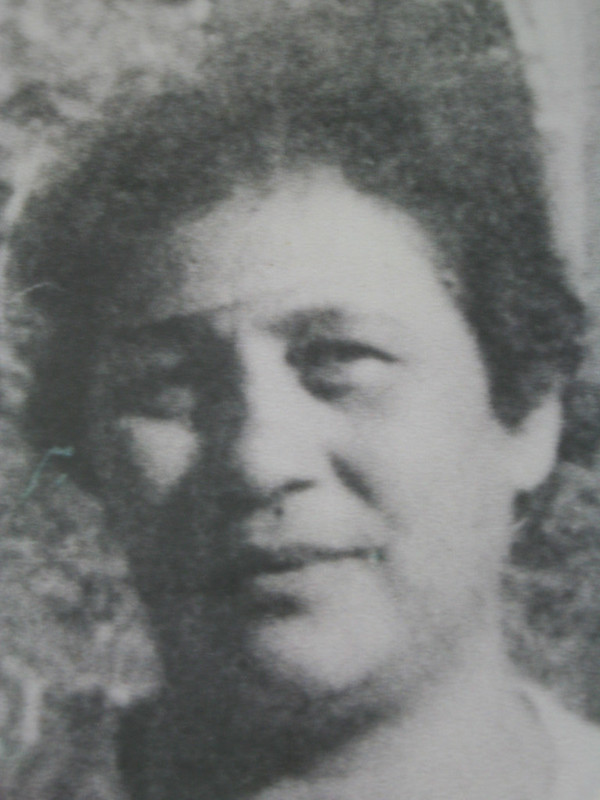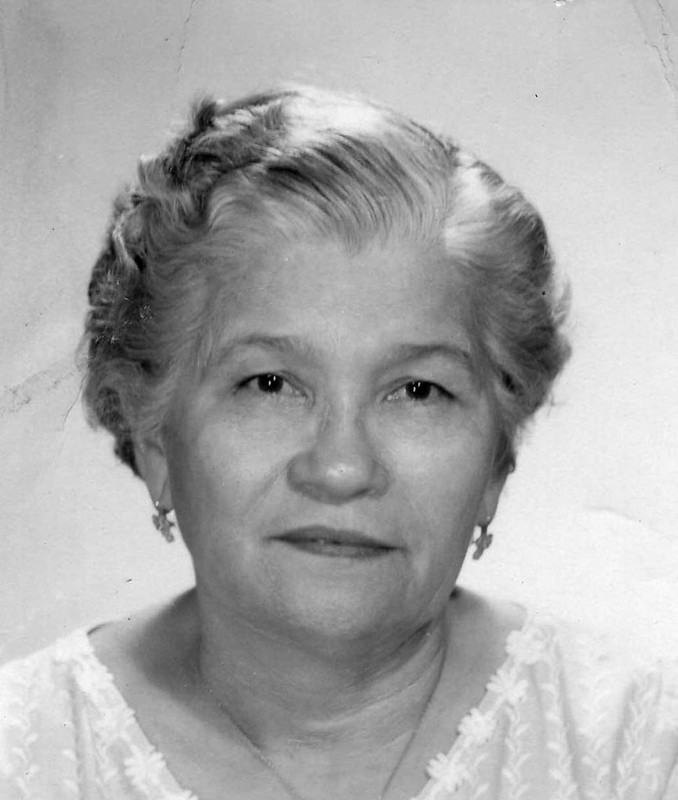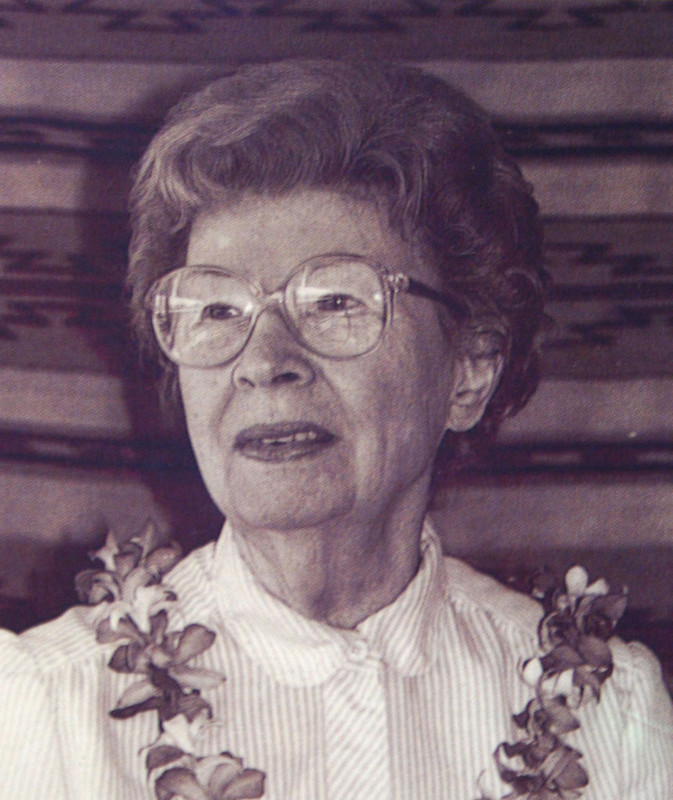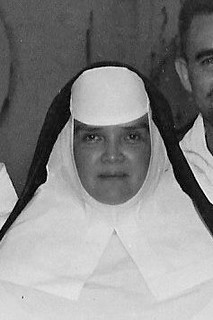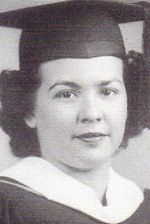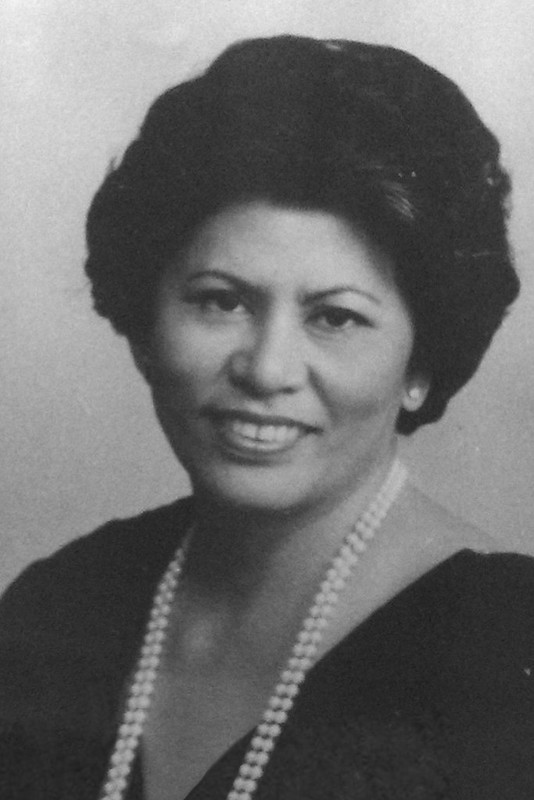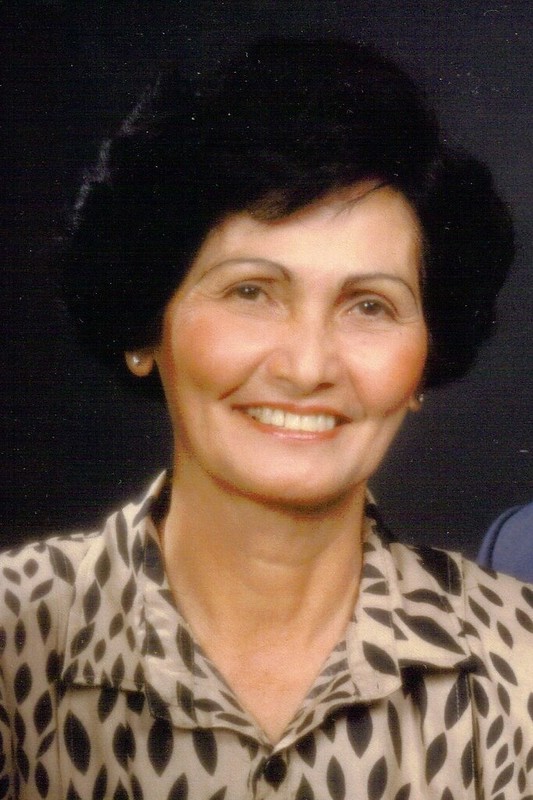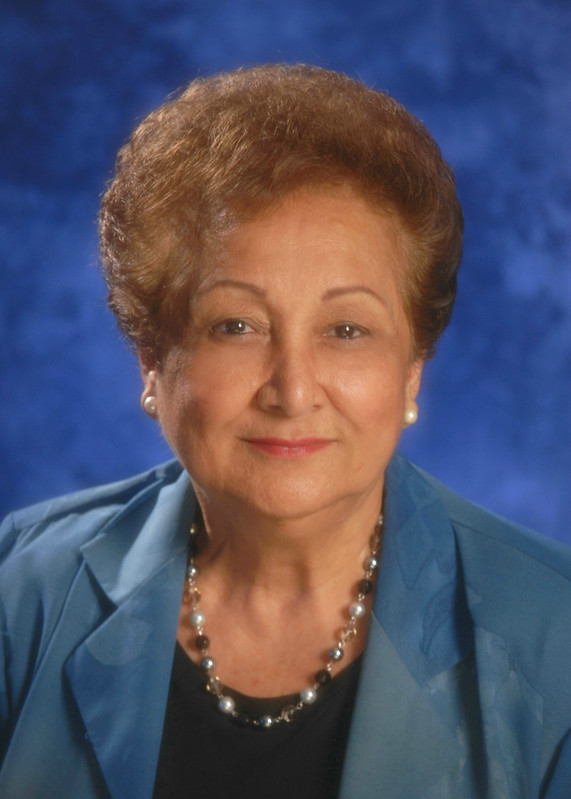Women’s lives, women’s stories
How many women in Guam’s history can you name?
Agueda Iglesias Johnston. Clotilde Gould. Cecilia Bamba. These are just a few of the Women in Guam History featured in this section of Guampedia.com. Why a separate section focused on women? The simple answer is that, until now, there were very few profiles of individual women compared to the number of profiles on men throughout the Guampedia website. We recognized the need for a more balanced presentation of people that have helped shape the history of our island and Guam society. The more complicated answer lies in the realization that many people from Guam, including lifelong residents and seasoned instructors of Guam history classes, are unable to name more than a handful of women in our island’s history.
This is largely because there are so few written accounts that focus on women’s lives and stories. As a repository of information about Guam, the opportunity to research and showcase women was something we could not pass up. With women comprising half the population of Guam, we needed to know: who are the women in Guam history? Why are there so few historical accounts about women, and so few women mentioned by name?
The answers to these questions are many and complex. However, with this section, Guampedia presents stories of some of the interesting and fascinating women who have “made their mark” or had some kind of impact on Guam history. We also want to provide a resource that inspires and motivates people to remember and learn from the past, and to collect stories about the important women – and men – in their lives.
Missing Voices: Representations of women in history
In spite of the long history of the Marianas, there are very few known CHamoru individuals. Instead, other historical figures, such as European explorer Ferdinand Magellan, Jesuit missionary Father Diego Luis de San Vitores, and World War II Japanese straggler Sergeant Shoichi Yokoi often figure more prominently in Guam history than native Chamorros.
However, a few notable CHamorus come to mind: Chief Kepuha (also spelled Quipuha), the first CHamoru noble baptized by Father San Vitores and who provided land in Hagåtña for the first Catholic church; Chief Matå’pang who killed San Vitores; Chief Hurao who mobilized CHamoru warriors in a battle against the Spanish in 1671. In the Spanish era, even fewer CHamorus are named, Padre José Bernardo Palomo y Torres, the first native priest, being an exception. In modern times, there are lists of CHamoru governors, the first archbishop, the first Congressional delegate, the first district judge – all of whom are men.
Pacific scholars often link this imbalance in the importance given to the representation of men over women in Pacific history in general to the long history of colonialism in the region, where native voices, especially women, were silenced or suppressed. This imbalance is also linked to the traditional Western practices of recording or writing history – in other words, how people choose what and who to remember, and how they write about the past – that affect what information is valued, shared and recorded for posterity.
Most Pacific societies are oral-based cultures, their long histories committed to memory and passed on from generation to generation through storytelling and other oral performances. The practice of “writing Pacific history” as we know it, therefore, began with the initial accounts of the first European explorers in the region, all of whom were men, largely writing about themselves interacting with the natives. Pacific men and women mostly were unnamed, with women relegated further to the background or to mere descriptions of their physical appearances.
The lack of historical writings about Pacific women could also be linked to the cultural disposition of women to live, work and act collectively with other women. Individual women, therefore, rarely stand out, unless they succeed at assuming male roles or engage in anything that extends beyond expected or presumed female roles, activities or experiences.
The imbalance of gender in historical representations is not surprising, considering that most literature about Guam history focuses on the crucial role of men, while paying little attention to the contributions of women. As a result, women are silent, barely visible, their stories and histories overwhelmed by the stories and histories of men.
The irony of this is that in ancient times, CHamoru society was traditionally matrilineal, whereby land and resources were passed through maternal lines of inheritance. Power was shared, if not equally, between men and women, particularly between brother and sisters. While men were more active in public domains, women also had great influence in decisions affecting clan and other social relations. With the introduction of Western culture and Christianity, the power of women was diminished, but women continued to maintain their control as heads of the household, responsible for the nurturing and education of children in the CHamoru language and cultural values.
Even today, most CHamorus recognize the importance of their mothers, grandmothers and aunts in CHamoru culture and society. Women participate in all facets of society, in all the major professions and businesses, are politically engaged and active in Church and community. However, there are still so few women written about or named in Guam history.
The few that are named – like Johnston, Gould and Bamba – are women of the 20th century, living in a time when Guam and the Mariana Islands were in transition, recovering from the effects of World War II, and emerging as modern American territories. They fit the image of the powerful – and empowered – CHamoru woman, straddling the line between historically and culturally defined gendered roles in their capacities as mothers, wives and nurturers, and their experiences as activists, working professionals and community leaders.
There are a few notable Guam scholars who have paid attention to the contributions and activities of women in Guam, such as Laura Souder, Anne Hattori, Vivian Dames, Anita Johnston, Christine Taitano DeLisle and Vicente M. Diaz. Their research provides important insights about CHamoru women and their changing roles and statuses as active agents in directing the course of Guam’s complex history. Interest in women studies have led to programs and courses at the University of Guam that focus on issues of gender, identity and representation. Theater productions at the university have also demonstrated among young people an interest in presenting women’s stories and the social challenges and realities women on Guam face.
This new section of Guampedia adds a new dimension to the recording and sharing of stories of women in Guam history. Through the Internet more stories of women can be added and broader audiences can be reached. Students and researchers will be able to access information that was available only in libraries through limited print editions or within specific family circles–private and inaccessible to the general public. But creating this new section has not been without challenges.
Guampedia’s Women in Guam History project
In March 2011, the University of Guam School of Business invited a scholar from the Philippines to give a presentation of significant women in that country’s history. Literally at the last minute, Guampedia was asked to provide a few profiles of women in Guam history to complement the Philippine women. Unfortunately, of more than 90 entries profiling individuals on the Guampedia.com website, only three were of women. There were individuals mentioned in different entries, such as educator Agueda Johnston, pattera (midwife) Ana Rios Zamora, and Sister Mary Inez Underwood of the Religious Sisters of Mercy, but profiles specifically focused on female historical figures were limited to businesswomen Ignacia Bordallo Butler and Maria Palomo Ada, and American anthropologist Laura Thompson. After a quick search through the Department of Chamorro Affairs’ Hale-Ta series a set of five profiles was compiled–just in time for the presentation.
This glaring imbalance of the numbers of profiles of men and women not only astounded Guampedia’s staff (all of whom are women), but pointed to the need to improve the representation of women in Guam history on Guampedia.com. From this experience the idea for a new project emerged, one that would focus on women who have made some kind of impact, either through their work or their personal lives, on our island’s history and the betterment of our community.
It was a daunting task from the start, but one that gained almost immediate support. Funding for the project was secured through grants from the Guam Women’s Club and the Guam Preservation Trust, and writers for the different entries were solicited. The hardest part was the selection of the women to be featured in this new section. The Guampedia staff decided this was not something they could do on their own, so an ad hoc committee was formed, comprised of scholars, historians and others in the local community who could give insight and help in this selection process.
The criteria for the women to be highlighted in this project were both simple and complex – first, the women should be deceased and have some connection to Guam. The other criteria involved a more qualitative evaluation of each woman’s significance to Guam history – achievements, accomplishments, contributions to society, or unusual circumstances.
Even within the committee, the selection of women was challenging. A preliminary list of more than 100 women with a brief description was compiled and the committee was given a chance to add to the list or provide more information. They were then asked to hone the list to twenty-five as a start for this new section.
Concerns raised during the selection process included clarifying what was considered “historically influential or significant” about the different women, because this would impact who should or should not be a part of the first list. The other challenge was the overall lack of information about women in Guam history. The selection committee had to look to their collective experiences and knowledge to put a list together, and even then, there were disagreements about the choices. However, the current entries do represent a general consensus of the ad hoc committee.
These were important learning experiences, but point to larger issues of cultural sensitivity and the inherent subjectivity and politics of any endeavor to record or write history. If there was anything the committee fully agreed upon it was that this was an important enough (and long overdue) effort to bring women’s voices and experiences into Guampedia and the general knowledge base about Guam history.
A beginning
The Women in Guam History section represents a new direction in Guampedia’s effort to provide a free, comprehensive resource about our island, our history and culture, and our people. The project is just a beginning for future biographical entries featuring the individuals who through their work, passions, activities and sacrifices have contributed to the betterment of our community.
A few things about this section are worth noting:
- This section does not include people who are alive.
- Personal names reflect the fullest formal version of the names available or how the individual was best known in Guam.
- Much of the information about the individual women was gathered from previously published resources, personal interviews with family members or friends, and other unpublished resources when available.
- The text and images presented in each entry are for educational purposes.
- More biographical profiles will be added later. Suggestions are always welcome.
We present this section as a beginning. We hope to fill it with more stories of Guam’s women, both named and unnamed, in our island’s history.
Guampedia’s Women in Guam History profiles
- Fo’na
- Bartola Garrido
- Ignacia Bordallo Butler
- Gertrude Costenoble Hornbostel
- Agueda Iglesias Johnston
- Maria Anderson Roberto
- Maria Arceo Ulloa
- Maria Palomo Ada
- Elena Cruz Benavente
- Amanda Guzman Shelton
- Laura Maud Thompson
- Mary Essie Underwood
- Concepcion Cruz Barrett
- Mariana Leon Guerrero Lujan
- Rosa Aguigui Reyes
- Cynthia Johnston Torres
- Lagrimas Leon Guerrero Untalan
- Elizabeth Perez Arriola
- Rosa Roberto Carter
- Beatrice Flores Emsley
- Emilie Green Johnston
- Rosa Perez Salas
- Cecilia Cruz Bamba
- Clotilde Castro Gould
- Lucia Fernandez Torres
- Candelaria Taitano Rios
- Gloria Borja Nelson
- Clair Raulerson
- Rita Guevara Sablan
Perspectives on Women in Guam History
A compilation of speeches presented during Guampedia’s Chamorro Heritage Series: Living History held October-December 2012
- Women in Politics, by Lourdes A. Leon Guerrero. Governor of Guam
- Women in Guam History: A Critical Reflection, by Anne P. Hattori, PhD. University of Guam Professor
- Women in Business, by Anita Borja-Enriquez, DBA. University of Guam Dean of School of Business and Public Administration
- Women and Religion in Chamorro Society, by Pale’ Eric Forbes. Capuchin friar and historian
- Women in the Arts, by Judy Flores, PhD. Artist, author, and historian

![Bartola Garrido, a CHamoru/Chamorro woman born and raised during the Spanish Era of Guam in the early 1800s, later became a resident of Yap, where she became influential in the community in establishing a Spanish Colony and a school for young girls.
Photo Source: Haas, Salesius. 1912. Die Karolinen-Insel Yap. Ein Beitrag zur Kenntnis von Land und Leuten in unseren deutschen Südsee-Kolonien. [The Caroline island of Yap. A contribution to the knowledge about the land and people of our German colonies in the South Seas]. Berlin: Wilhelm Süsserott Bartola Garrido, a CHamoru/Chamorro woman born and raised during the Spanish Era of Guam in the early 1800s, later became a resident of Yap, where she became influential in the community in establishing a Spanish Colony and a school for young girls.
Photo Source: Haas, Salesius. 1912. Die Karolinen-Insel Yap. Ein Beitrag zur Kenntnis von Land und Leuten in unseren deutschen Südsee-Kolonien. [The Caroline island of Yap. A contribution to the knowledge about the land and people of our German colonies in the South Seas]. Berlin: Wilhelm Süsserott](https://live.staticflickr.com/7204/6817503594_2d1b94bc49_n.jpg)




